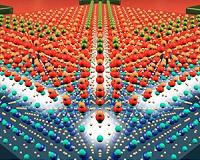 |
Santa Barbara CA (SPX) Apr 25, 2011 Researchers at the University of California, Santa Barbara, say they've figured out the cause of a problem that's made light-emitting diodes (LEDs) impractical for general lighting purposes. Their work will help engineers develop a new generation of high-performance, energy-efficient lighting that could replace incandescent and fluorescent bulbs. "Identifying the root cause of the problem is an indispensable first step toward devising solutions," says Chris Van de Walle, a professor in the Materials Department at UC Santa Barbara who heads the research group that carried out the work. Van de Walle and his colleagues are working to improve the performance of nitride-based LEDs, which are efficient, non-toxic and long-lasting light sources. They investigated a phenomenon referred to as "droop"?the drop in efficiency that occurs in these LEDs when they're operating at the high powers required to illuminate a room. The cause of this decline has been the subject of considerable debate, but the UC Santa Barbara researchers say they've figured out the mechanism responsible for the effect by performing quantum-mechanical calculations. LED droop, they conclude, can be attributed to Auger recombination, a process that occurs in semiconductors, in which three charge-carriers interact without giving off light. The researchers also discovered that indirect Auger effects, which involve a scattering mechanism, are significant?a finding that accounts for the discrepancy between the observed degree of droop and that predicted by other theoretical studies, which only accounted for direct Auger processes. In nitride LEDs, "These indirect processes form the dominant contribution to the Auger recombination rate," says Emmanouil Kioupakis, a postdoctoral researcher at UC Santa Barbara and lead author of a paper published online April 19 in Applied Physics Letters. The other authors are Van de Walle, Patrick Rinke, now with the Fritz Haber Institute in Germany, and Kris Delaney, a project scientist at UC Santa Barbara. LED droop can't be eliminated because Auger effects are intrinsic, but it could be minimized, the researchers say, by using thicker quantum wells in LEDs or growing devices along non-polar or semi-polar growth directions in order to keep carrier density low. "With Auger recombination now established as the culprit, we can focus on creative approaches to suppress or circumvent this loss mechanism," Van de Walle says. The work was supported by the Center for Energy Efficient Materials, an Energy Frontier Research Center funded by the U.S. Department of Energy, and by UC Santa Barbara's Solid State Lighting and Energy Center. Computational resources were provided by the U.S. Department of Energy's National Energy Research Scientific Computing Center at Lawrence Berkeley National Laboratory, the California NanoSystems Institute's Computing Facility at UC Santa Barbara, and the National Science Foundation-funded TeraGrid.
Share This Article With Planet Earth
Related Links University of California - Santa Barbara Computer Chip Architecture, Technology and Manufacture Nano Technology News From SpaceMart.com
 Super-Small Transistor Created, Artificial Atom Powered By Single Electrons
Super-Small Transistor Created, Artificial Atom Powered By Single ElectronsPittsburgh PA (SPX) Apr 21, 2011 A University of Pittsburgh-led team has created a single-electron transistor that provides a building block for new, more powerful computer memories, advanced electronic materials, and the basic components of quantum computers. The researchers report in Nature Nanotechnology that the transistor's central component-an island only 1.5 nanometers in diameter-operates with the addition of only ... read more |
|
| The content herein, unless otherwise known to be public domain, are Copyright 1995-2010 - SpaceDaily. AFP and UPI Wire Stories are copyright Agence France-Presse and United Press International. ESA Portal Reports are copyright European Space Agency. All NASA sourced material is public domain. Additional copyrights may apply in whole or part to other bona fide parties. Advertising does not imply endorsement,agreement or approval of any opinions, statements or information provided by SpaceDaily on any Web page published or hosted by SpaceDaily. Privacy Statement |